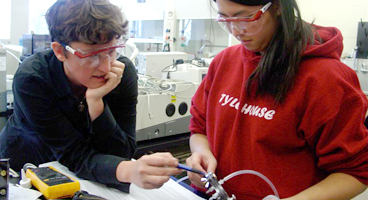Document Type
Article
Publication Date
2014
Publication Title
Journal of the American Academy of Audiology
Abstract
Background: Power reflectance measurements are an active area of research related to the development of noninvasive middle-ear assessment methods. There are limited data related to test-retest measures of power reflectance.
Purpose: This study investigates test-retest features of power reflectance, including comparisons of intrasubject versus intersubject variability and how ear-canal measurement location affects measurements.
Research Design: Repeated measurements of power reflectance were made at about weekly intervals. The subjects returned for four to eight sessions. Measurements were made at three ear-canal locations: a deep insertion depth (with a foam plug flush at the entrance to the ear canal) and both 3 and 6 mm more lateral to this deep insertion.
Study Sample: Repeated measurements on seven subjects are reported. All subjects were female, between 19 and 22 yr old, and enrolled at an undergraduate women’s college.
Data Collection and Analysis: Measurements on both the right and left ears were made at three earcanal locations during each of four to eight measurement sessions. Random-effects regression models were used for the analysis to account for repeated measures within subjects. The mean power reflectance for each position over all sessions was calculated for each subject.
Results: The comparison of power reflectance from the left and right ears of an individual subject varied greatly over the seven subjects; the difference between the power reflectance measured on the left and that measured on the right was compared at 248 frequencies, and depending on the subject, the percentage of tested frequencies for which the left and right ears differed significantly ranged from 10% to 93% (some with left values greater than right values and others with the opposite pattern). Although the individual subjects showed left-right differences, the overall population generally did not show significant differences between the left and right ears. The mean power reflectance for each measurement position over all sessions depended on the location of the probe in the ear for frequencies of less than 1000 Hz. The standard deviation between subjects’ mean power reflectance after controlling for ear (left or right) was found to be greater than the standard deviation within the individual subject’s mean power reflectance. The intrasubject standard deviation in power reflectance was smallest at the deepest insertion depths.
Conclusions: All subjects had differences in power reflectance between their left and right ears at some frequencies; the percentage of frequencies at which differences occurred varied greatly across subjects. The intrasubject standard deviations were smallest for the deepest probe insertion depths, suggesting clinical measurements should be made with as deep an insertion as practically possible to minimize variability. This deep insertion will reduce both acoustic leaks and the effect of low-frequency ear-canal losses. The within-subject standard deviations were about half the magnitude of the overall standard deviations, quantifying the extent of intrasubject versus intersubject variability
Volume
25
Issue
5
DOI
10.3766/jaaa.25.5.3
Recommended Citation
Abur, Defne; Voss, Susan E.; and Horton, Nicholas J., "Intrasubject Variability in Power Reflectance" (2014). Engineering: Faculty Publications, Smith College, Northampton, MA.
https://scholarworks.smith.edu/egr_facpubs/137


Comments
Archived as published. Open access article.